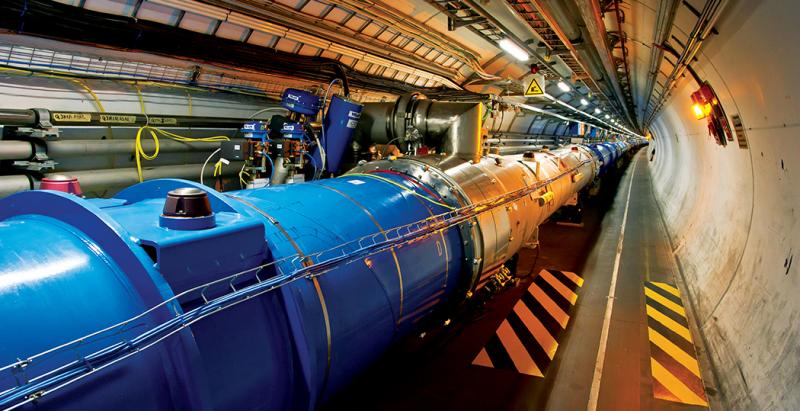The Large Hadron Collider (LHC) is the world’s largest and most powerful particle accelerator. The LHC is the largest machine in the world. It took thousands of scientists, engineers and technicians decades to plan and build, and it continues to operate at the very boundaries of scientific knowledge. It first started up on 10 September 2008, and remains the latest addition to CERN’s accelerator complex. The LHC consists of a 27-kilometre ring of superconducting magnets with a number of accelerating structures to boost the energy of the particles along the way.
Thousands of magnets of different varieties and sizes are used to direct the beams around the accelerator. Just prior to collision, another type of magnet is used to "squeeze" the particles closer together to increase the chances of collisions. The particles are so tiny that the task of making them collide is akin to firing two needles 10 kilometres apart with such precision that they meet halfway.

(relevant)

 |
| Map of LHC (located in Geneva, Switzerland) |

Fast Facts:
1. It cost £2.6bn to build
2. It houses 9300 magnets – pre-cooled to -193.2C, using 10,080 tonnes of liquid nitrogen. They are then taken down to -271.3C with liquid helium.
3. It fires protons and lead ions around a 17mile circular tunnel.
4. The protons, when the machine is cranked up to full power, travel at a mind-blowing 99.9999991% of the speed of light – or 11,245 laps every second – or 671,000,000 mph.
5. 600m collisions take place every second.
6. The collisions generate temperatures more than 100,000 times hotter than the heart of the Sun.
7. The inside of the accelerator is an ultra-high vacuum – a cavity as empty as interplanetary space. This is so the protons avoid collisions with gas molecules.
8. A total of 10,000 scientists and engineers from more than 60 countries work on LHC.
9. The most powerful supercomputer system in the world was built to analyse the data generated by the LHC. It’s called the Grid and is formed from tens of thousands of interconnected computers scattered around the world. The data recorded by each of the big experiments at the LHC will fill around 100,000 dual-layer DVDs every year.
10. There’s even an LHC rap, which pretty much explains everything (see below).
(relevant)


Comments
Post a Comment